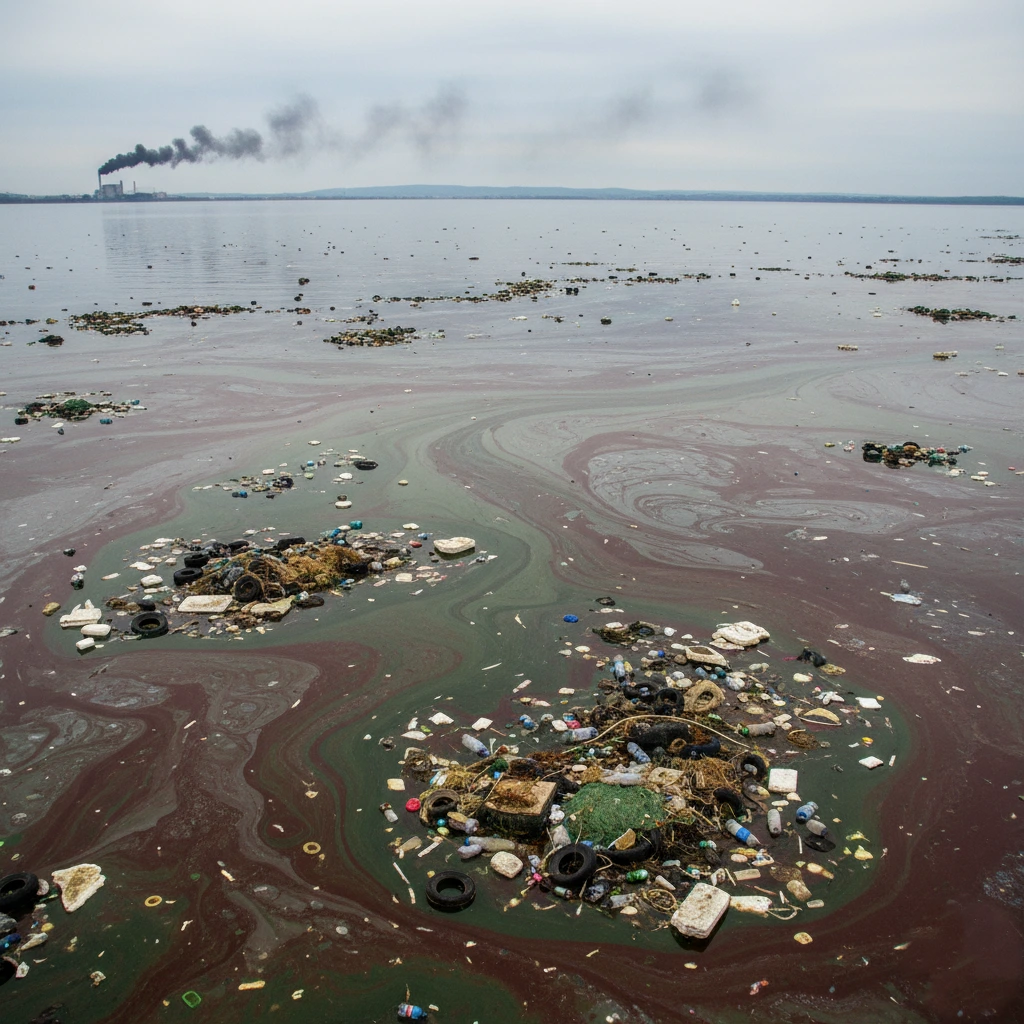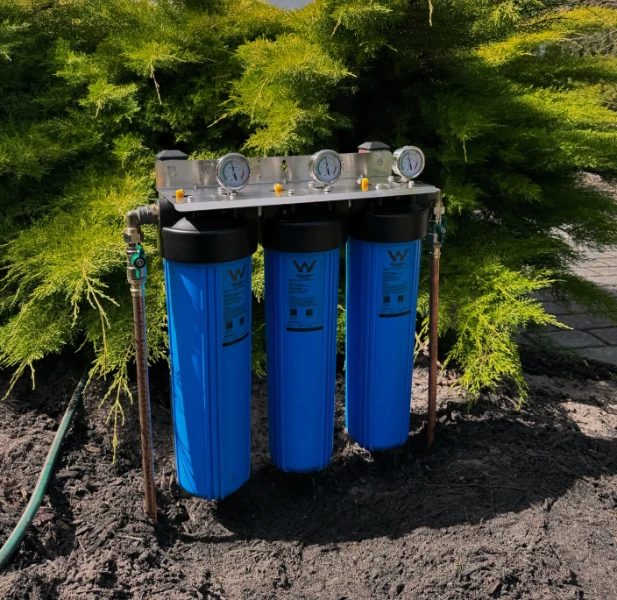Table of Contents

INTRODUCTION:
We will look at water contamination in Australia, the health impacts of contaminants in your drinking water, and why reverse osmosis is one of the best methods for removing contaminants to produce safe drinking water. While Australia is regularly thought of as having some of the best drinking water in the world, it is not contaminant-free. Drinking water goes from your tap into pipes or channels, through a treatment plant, and eventually into reservoirs or the desalination plant, before it comes back into your glass. Each of these journeys accumulates unwanted contaminants, some of which may impact your health.
Chlorine by-products, agricultural chemicals, heavy metals, and microplastics are all water contaminants in Australia that could be more prevalent than you think. We are going to look at the sources of water contamination in Australia, the potential health risks you may face, and provide an impartial analysis of reverse osmosis filtration systems compared to other options usually available for producing safe drinking water.
Understanding Australian Water Contaminants
In Australia, the phrase water contaminants describes a large range of substances, from naturally occurring minerals, through to agricultural run-off, industrial chemicals, and microbial organisms. Climate conditions, industrial activity, and differences in the source of water give different parts of Australia distinct contamination problems. For example, rural communities usually rely on groundwater or rainwater tanks, which can be high in bacteria or agricultural chemicals, whilst urban areas may face the challenge of heavy metals or chlorination by-products.
Let’s expand on the main contaminants below.
Heavy Metals
Heavy metals are one of the most concerning contaminants of Australian waters because they can cause serious long-term health effects.
Lead: Much like other heavy metals, lead typically enters water supply systems through old infrastructure, including plumbing pipes and solder. Even at low concentrations, lead exposure has been linked to developmental delays in children, kidney damage, and neurological issues in adults. Older plumbing systems are still found in many homes in Australia; thus, it remains an ongoing health concern.
Copper: Copper is another heavy metal that can leach into drinking water due to the corrosion of piping systems. Copper is an essential trace mineral in small amounts, but too much copper can lead to gastrointestinal distress as well as liver and potentially kidney damage.
Mercury and Arsenic: In certain areas of Australia, natural geological formations as well as mining activity can increase the possibility of mercury and arsenic contamination of waters. Both are toxic substances with carcinogenic effects and long-term health concerns.
Microorganisms
Pathogenic microorganisms represent another group of contaminants found in Australian waters. There are some microorganisms in the water; however, even though water authorities quote samples of drinking water that had undergone chlorination or some other disinfection process, these disinfections were microbiologically safe.
Bacteria: Pathogenic bacteria such as E. coli can be introduced into water supplies through animal waste, sewage leaks onto water supplies, or runoff from farming. Exposure to these bacteria can lead to diarrhea, stomach cramps, and in some cases, severe gastrointestinal illness.
Protozoa and Parasites: Protozoa or parasites such as Giardia and Cryptosporidium can also endure disinfection processes such as treatment with chlorine. Although these parasites are less easily identified than pathogenic bacteria, they can remain in treated water and cause lasting intestinal infection.
Viruses: Although not common, waterborne viruses, in some cases, have the potential to pose a health risk to the community, especially when heavy rain and flooding occur, or due to the failure of infrastructure.
Agricultural Runoff
The agricultural industry is an important contributor to the economy of Australia, and it is also a significant contributor to Australian water contaminants. Fertilizers, pesticides, and herbicides used on crops are often washed into rivers and groundwater supplies.
Nitrates and Phosphates: Fertilizer runoff increases the levels of nitrates and phosphates in the water. Nitrates can be especially harmful to infants, and they can cause “blue baby syndrome,” a condition in which the blood can no longer carry oxygen.
Herbicides and Pesticides: Commonly used chemicals in farming are atrazine and glyphosate. Long-term exposure to these chemicals through drinking water has been associated with hormone disruption and an increased risk of cancer.
Chlorine By-Products
Chlorination is a commonly used method in Australia to provide safe drinking water. Unfortunately, chlorine reacts with natural organic matter in the water, leading to the formation of by-products, such as trihalomethanes (THMs). Many of these by-products are regarded as potential carcinogens. While all chlorinated drinking water is regulated to ensure safe levels of these substances, the presence of these by-products does show a common dilemma: the need to disinfect drinking water and the risk of disinfection by-products.
Emerging Contaminants
In recent years, scientists have determined that there are emerging classes of water contaminants in Australia that have not previously been monitored. Examples include:
Microplastics: Microplastics are particles of plastic that have broken down from packaging, synthetic clothing, and waste. Microplastics are now detected in tap water samples across the globe, including Australia.
PFAS: Per- and polyfluoroalkyl substances, also termed “forever chemicals.” These substances are used in firefighting foam, resistant cooking pots, and industrial processes. PFAS accumulate in the body and have been implicated in certain types of cancer, immune suppression, and thyroid disease.
Pharmaceutical Residues: Antibiotics, painkillers, and other pharmaceuticals occasionally are detected in water supplies where treatment processes or wastewater works do not consistently remove these sources.
Health Impacts of Australian Water Contaminants
The health effects of Australian water contaminants have a range that can cause mild discomfort in the short term, and in some cases, lead to life-threatening chronic disease. Taking a closer look at these risks will show you why investing in upgraded filtration should no longer be considered a luxury.
Short-Term Effects on Health

Gastrointestinal Illnesses: Water that contains bacteria, protozoa, or viruses can lead to illnesses characterized by diarrhea, nausea, and dehydration. Children, seniors, and those with compromised immune systems are at higher risk.
Skin and Eye Irritation: Chlorine and chloramine are two examples of chemicals that lead to skin and eye irritation. This is especially relevant for people with some types of eczema or other skin conditions.
Acute Toxic Reactions: In communities that experience high concentrations of heavy metals or nitrates, the water source can cause severe health consequences in the short term, like stomach pain, dizziness, and possible hospitalization.
Long-Term Health Effects
Affecting the Brain: If exposed to lead or mercury for a long time, a person’s brain development can be affected, while someone may experience memory loss or impaired cognitive functioning as an adult.
Cancer: Chlorination byproducts, pesticides, and industrial pollution (PFAS and others) have been linked to elevated cancer risk exposure over several years.
Reproductive Health: Some contaminants, such as nitrates or endocrine-disrupting chemicals, impact reproductive health, potentially resulting in birth defects or impaired fertility.
Chronic Illness: Longer exposures to contaminated drinking water have been associated with heart disease, kidney disease, and thyroid conditions.
Government Regulations on Australian Water Contaminants
Australia boasts one of the most rigorous water safety frameworks anywhere, underpinned by the Australian Drinking Water Guidelines (ADWG), which prescribe maximum levels of various Australian water contaminants, including heavy metals, pesticides, and microbial organisms.
These guidelines aim to protect the water that is supplied to our homes for human consumption. Water utilities are required to sample and test water regularly and provide reports on quality. However, these guidelines do not carry legal weight and are recommendations, rather than enforceable laws. Therefore, compliance levels will be determined by the water supplier and region.
For example:
Urban Areas: Major urban developments, such as Sydney, Melbourne, and Brisbane, easily meet and, usually, exceed the ADWG requirements because of sophisticated treatment plants.
Rural and Remote Communities: Many small towns and Indigenous communities do not have the same ability to comply with established guidelines, as they have less infrastructure and funding in place. In some cases, local authorities issue boil water alerts several times a year.
Even though the regulatory framework is solid, it cannot ensure that there are no Australian water contaminants. If an emerging contaminant is not yet regulated, such as microplastics or PFAS, it may be prohibited. That deficiency is the reason many Australians are selecting household-level protection, like reverse osmosis systems.
Why Reverse Osmosis is Superior Against Australian Water Contaminants
There are numerous water filtration methods available in Australia, but the reverse osmosis (RO) method consistently comes out on top for treating a wide range of contaminants.
How Reverse Osmosis Works:
Reverse osmosis is a filtration process that utilizes pressure to push water molecules through a semipermeable membrane. The membrane has extremely small pores, allowing pure water to pass through while rejecting contaminants. Unlike standard filters, which remove large particles only, a reverse osmosis system is capable of removing microscopic contaminants, dissolved salts, and chemical compounds.
Contaminants Removed by Reverse Osmosis
Heavy Metals: Reverse osmosis membranes effectively block lead, arsenic, mercury, and copper.
Microorganisms: Not intended as a substitute for disinfection, RO membranes can effectively reduce bacteria, protozoa, and viruses.
Agricultural Chemicals: Very effective at filtering pesticides, herbicides, and nitrates.
Chlorination By-Products: RO membranes reduce trihalomethanes, haloacetic acids, and other chemicals.
Emerging Contaminants: Some advanced reverse osmosis systems can reduce microplastics, PFAS, and pharmaceuticals.
Comparison with Other Filtration Methods
Activated Carbon Filters: Filter out chlorine and make water taste better, but don’t remove heavy metals and nitrates.
UV Purifiers: Kill microorganisms, but do not remove chemical contaminants.
Sediment Filters: Filter out dirt and large particles, but do not filter dissolved substances.
Reverse osmosis is a more comprehensive process that will remove almost all categories of contaminants present in Australian drinking water.
Benefits of Reverse Osmosis for Australian Homes
A reverse osmosis system provides many benefits beyond just purification from contaminants.
Health Protection: You and your family are protected from harmful chemicals, heavy metals, and pathogens.
Taste and Odor Improvements: Reverse osmosis systems remove chlorine and other chemicals that can lead to bad taste and odor, giving you extremely fresh water.
Environmental Benefits: Households can reduce their dependence on bottled water, which also reduces their plastic waste.
Cost-effective: The initial price may seem high, but reverse osmosis actually saves consumers money compared to buying bottled water over time.
Peace of mind: Knowing that your water has been purified from a wide range of Australian water contaminants provides confidence and security.
Challenges and Considerations
While reverse osmosis is a superior form of protection, a few cautions and considerations are in order. Of course, as with any system, there are some downsides to be aware of.
Water Wastage: Wastewater is created when water is filtered by RO systems. Manufacturers in recent years have designed more compatible filtration systems.
Mineral Removal: RO removes healthy minerals such as calcium and magnesium. Fortunately for users, many reverse osmosis system vendors have included remineralization or filters and purifiers.
Maintenance: Replacement of the filter modules is performed at some frequency to work efficiently.
Practical Tips for Reducing Exposure to Australian Water Contaminants

Even with good treatment protocols, individuals can take steps to reduce their risk of exposure to contaminants in the Australian water supply.
Install a Reverse Osmosis System: This offers the most comprehensive treatment option across a suite of contaminants.
Add a Remineralization Filter: If you are concerned with the removal of useful minerals in the reverse osmosis process, now there are post-filters designed to restore calcium and magnesium after treatment.
Safeguard Plumbing Systems: Plumbing systems with lead or copper pipes, fittings, or joints should be replaced and updated.
Stay informed: You can also keep up to date regarding serious violations from your local water price providers’ public annual quality report. Reports contain knowledge about what Australian water contaminants were found and, importantly, if the contaminants found were assessed above guidelines.
Use Rainwater Wisely: If you are relying on tanks, be sure to clean the tank, gutters, and roof regularly, in order to ensure tank water is not subjecting you to chemical and microbial contamination.
Boil water when identified: Boiling water for at least one minute will kill most microorganisms, and in the case of boil water alerts, it is a significant step in providing assurance for drinking water.
With the combination of oversight from the government, persons within Australia can at least reduce and mitigate potential risks associated with Australian water contaminants.
Conclusion:
In general, Australia’s water supply is considered safe; however, the range of Australian water contaminants shows that there is a need for additional protection at the home level. Heavy metals, agricultural runoff, chlorination by-products, and new contaminants such as PFAS and microplastics present genuine hazards that cannot be ignored.
Reverse osmosis filtration technology provides superior protection against a broad range of contaminants that other technologies simply do not address. For Australian families who want cleaner, healthier, and better-tasting water, investing in a reverse osmosis system is not just an improvement; it’s a long-term health benefit.
By learning more about the hazards of Australian water contaminants and committing to a water filtration system, families can take control of their drinking water quality and have more peace of mind.
_edited_9.png)